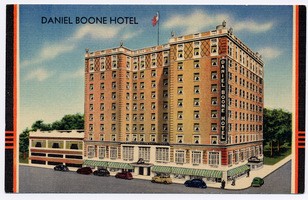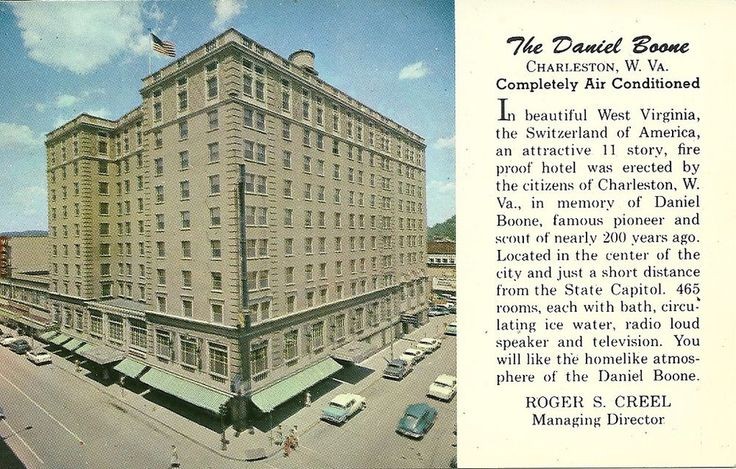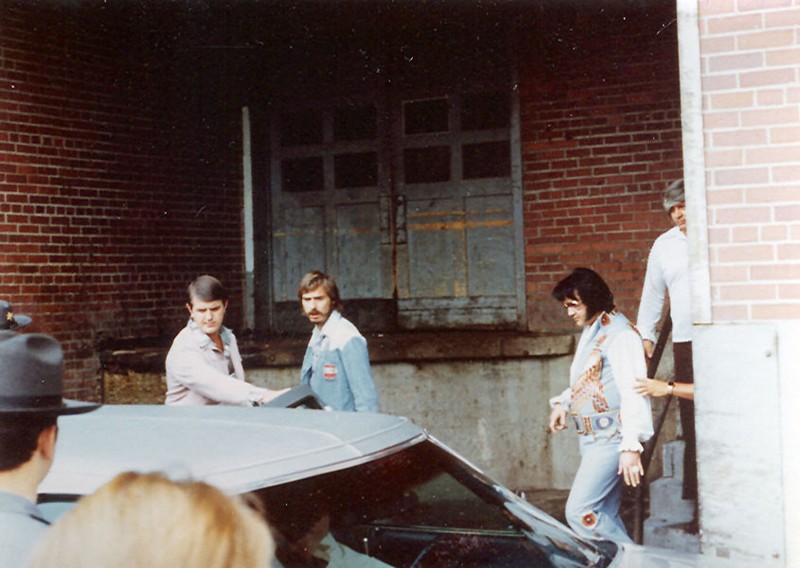Daniel Boone Hotel, 1929-1981
Introduction
Text-to-speech Audio
Images
This historic postcard shows the Daniel Boone Hotel near the time of its 1949 expansion

The Daniel Boone Hotel

A look into the Cardinal Room.

Elvis Presley exiting the Daniel Boone Hotel to perform a concert at the Charleston Civic Center on July 24, 1976.

Backstory and Context
Text-to-speech Audio
The A.G. Higginbotham Company of Charleston hired New York City architect, W.L. Stoddard to build the Daniel Boone Hotel in 1929. Prior to housing the Daniel Boone Hotel, this piece of property was home to the “Pasteboard Capitol” that was destroyed by fire in 1927. The Daniel Boone Hotel was one of the premiere hotels in the region when it opened in 1929. The ten-story luxury hotel featured the classical revival style with its blond brick exterior and stone terra cotta. Even after the capitol moved from this section of downtown to the east end, the hotel remained the center of political life and hosted legislators and federal officials traveling on government business. It also hosted dignitaries and celebrities from Presidents Hoover and Truman and First Lady Eleanor Roosevelt to Bob Hope, Jack Dempsey, and Gene Autry. Elvis and President John F. Kennedy also stayed in the historic hotel. The Cardinal Room was the Daniel Boone’s fine dining space where many of these politicians would dine during their stay.
Despite the nationwide depression, the hotel expanded in 1936. World War II and the post-war period saw a period of sustained economic growth in the region. Union workers in coal and other industries enjoyed middle-class standards of living and Charleston experienced population growth throughout the decade. In 1949, the hotel expanded once again, providing an ornate ballroom, meeting rooms, and 465 guest rooms. However, the region's growth did not continue as central Appalachia suffered industrial decline in subsequent decades-a phenomenon that was similar to the famous "Rust Belt" cities of the upper Midwest. The hotel closed in 1981. Three years later, the former hotel reopened as a downtown office building and was placed on the National Register of Historic Places in 1984. Today many local businesses and firms are located in 405 Capitol Street.
Sources
Cohen, Stan "Daniel Boone Hotel." e-WV: The West Virginia Encyclopedia. 30 January 2013. Web. 07 November 2014.
Marshall, Paul D.. Cook, John D.. Historical and Architectural Survey Downtown Charleston, West Virginia. Charleston, WV. New-Mail Company, 1984.
Gioulis, Michael. NRHP Nomination Form. March 10, 1984. Accessed March 05, 2017. http://www.wvculture.org/shpo/nr/pdf/kanawha/84003602.pdf.

